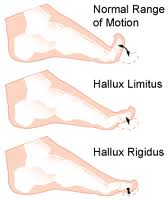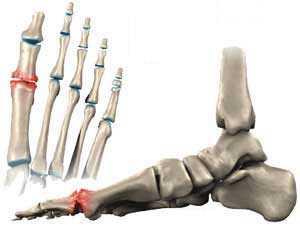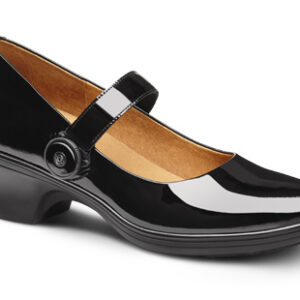A painful big toe joint can be caused by arthritis, gout, bunion, pseudogout, psoriasis, rheumatoid arthritis (RA), sesmoiditis, traumatic injury, and others. Arthritis (degenerative joint disease) can be caused by injury any of the above conditions and is a common condition causing inflammation of this joint and other joints in the foot.
Hallux Limitus and Hallux Rigidus

Range of motion issues big toe joint
Hallux limitus and hallux rigidus are characterized by degenerative arthritis and stiffness due to loss of cartilage and bone spurs affecting the 1st metatarsalphalangeal joint (MTPJ). The 1st MTPJ is the joint where the big toe meets the foot, the big toe or hallux. arthritis at the 1st MTPJ is called hallux limitus, when the toe can no longer move due to arthritis it is called hallux rigidus.
Symptoms
- Pain and stiffness in the joint at the base of the big toe during use (walking, standing, bending, etc.)
- Difficulty with certain activities (running, squatting)
- Swelling and inflammation around the joint
- Callus or ulcer formation along the side or on the bottom of the big toe.
- Swelling, redness, and heat in the 1st MTPJ
Hallux limitus and hallux rigidus are a result of decreased cartilage and or inflammation in the big toe joint. This is most commonly caused by over pronation in the mid foot leading to jamming of the 1st MTPJ or bunion formation. Metabolic conditions and autoimmune diseases like gout, pseudogout, RA, and psoriasis can also cause deterioration of the 1st MTPJ and other joints. If these diseases are treated appropriately deterioration can be minimized.






